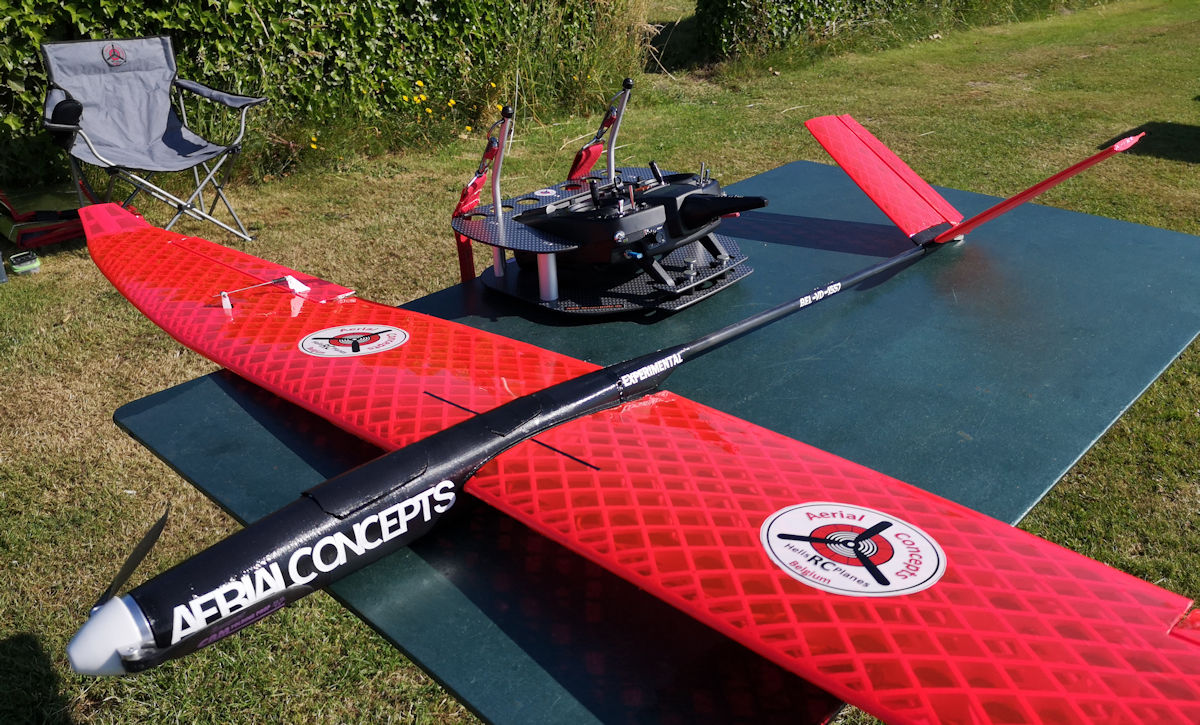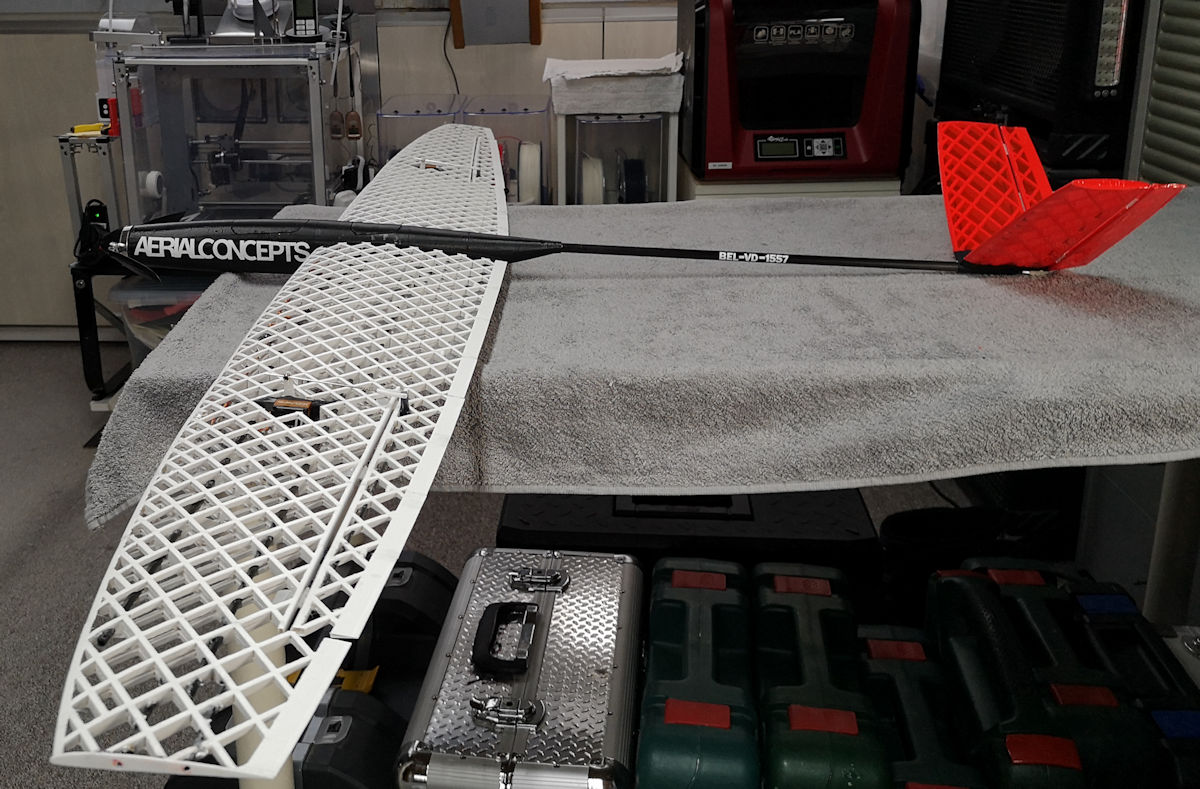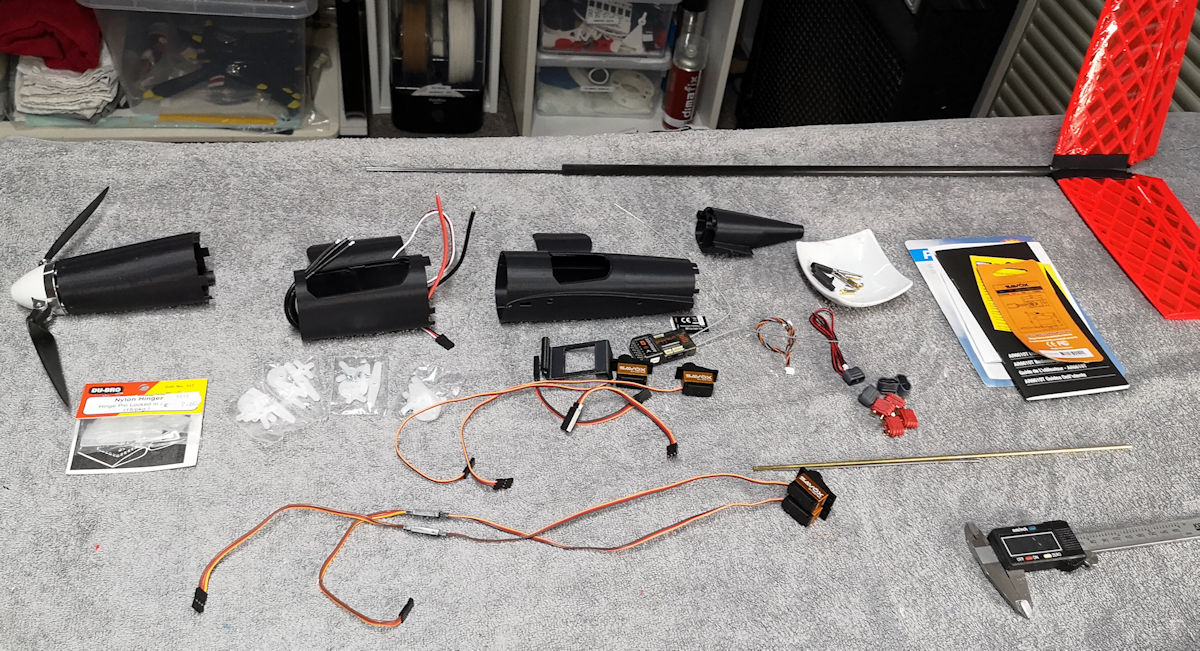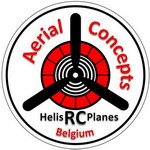

 Starting 3D printing RC Airplanes
Starting 3D printing RC Airplanes
This glider was my first attempt to print an RC airplane. Beginning 2019 I started to explore 3D printing. My first printer was a Da Vinci Jr 1.0 Pro from XYZprinting. The advantage of this printer is you didn't have to use only the filament from the printer manufacturer. The cons are small and not heated bed with limited slicer software. So I could experiment with PLA filament of different manufacturers and use other slicers like Cura. Finally, now I use the Simplify3D slicer, and mostly Polymaker and Makerfill filament. I try to keep the filament dry in some Polybox containers from Polymaker, use an Esun eBox Filament Dryer as a feeder. In September 2019 I bought a Balco Touchscreen 3D printer. This printer originated from a Wanhao Duplicator I3 plus. I did a lot of printer modifications, like a Plexi enclosure with some rpm-controlled fans, a glass plate on the bed, a Microswiss All metal Hotend with a Slotted cooling block, and a CNC Machined Lever and Extruder Plate. I Have upgraded the Balco firmware to ADVi3++ and use a Raspberry PI with Octoprint software and the Printoid App on my Android phone. To connect to my printer from anywhere I have a separate Raspberry PI gateway with OpenVPN.
Printing the Kodo
When looking on the Internet for 3D printed RC airplanes I was charmed with the design of the Kraga Kodo. Here you can read the story behind Kraga. The combination of carbon struts, covering film, lightweight design, the compact fuselage with carbon reinforcement, and carbon tail tube. Because of the rather low deformation temperature of PLA (55 ºC) and limited UV resistance I choose the white and black Polymaker Polylight ASA filament and Oracover Red Transparant Fluorescent film. ASA is light UV improved ABS with higher temperature (75 ºC) resistance before deformation than PLA. Polylight ASA has a lower specific weight of 1.04 g/cc versus 1.27 g/cc for PLA. I designed some extra ASA parts in FreeCAD 0.18 as battery support, a receiver-, and gyro support, some new tail horns, and winglets. Some of my Printer settings are; minimum Printing volume 200x200x180 mm, Extruder 0.4 mm, Layer Height 0.19 mm, Extruder Temp 245 ºC, Filament Speed max 40 mm/s, Bed 90 ºC, Cooling 0%.
Electronics for this Kodo
I used a Pichler Boost 18 motor with KV 1050 with a Pichler Boost XQ 30 ESC, 4 Savox SH-0257 MG (Metal gear) servos, a Spektrum AR6610T 6 channel receiver, and a Turnigy nano-tech 3S 950 mAh battery.
Modifications
MOD1: Modified the main wing connection with printed and glue base plate on the main wings and two super magnets.
MOD2: Modified the carbon control rods and newly designed ASA tail horns for the control surfaces of the V-tail to make steering directer and without play and binding.
MOD3: Added winglets to the main wings to try to improve the stability of the main wing and reduce the twisting forces when taking fast turns.
MOD4: Added A3super 3 Gyro from Hobbyeagle to improve stability and still to be able to use the ailerons as spoilerons to reduce landing distance.
Summery
A successful maiden flight. Good protection connection of the main wing, because I had a not so perfect grass landing, and on one wing part separated without any damage! There were some remarks from spectators about the flexibility of the main wing. They believed that the main wing would not hold, but it still does. A good gliding angle. I had to use the spoilerons to slow down the glider in the final landing phase to make it easier to land on the grass runway. After more flights and more wind, I experienced probably twisting of the main wing and in a low fast turn and had a crash, probable because of the twisting and some play on the V_tail steering. I had only to replace the tail carbon rod and glue some cracks in the fuselage and one of the wings. Impressive little damage after flying into the ground. I modified the steering for the V-tail and installed the HobbyEagle A3super 3 V2 programmable 6-axis gyro. Did some more test flying. This plane performs well but the rather large flexibility of the main wing in ASA remains a weakness, probably because of the different material properties between ASA and original by Kraga proposed PLA.
Wing Span: 1.8 m
Length: 0.9 m
Flight Weight: 0.8 kg
Wing Aera: 26 dm2
Wing Loading: 31 gr/dm2
Wing Cube Loading: WCL 6
Power: 3S 950 mAh
Motor: Pichler boost 18 KV 1050 Outrunner
Propeller: 1x 9x6 2-blade folding
Stall Speed: 20 km/u
Sound Pressure: <50 dB(A)/7m
Video
Photos
